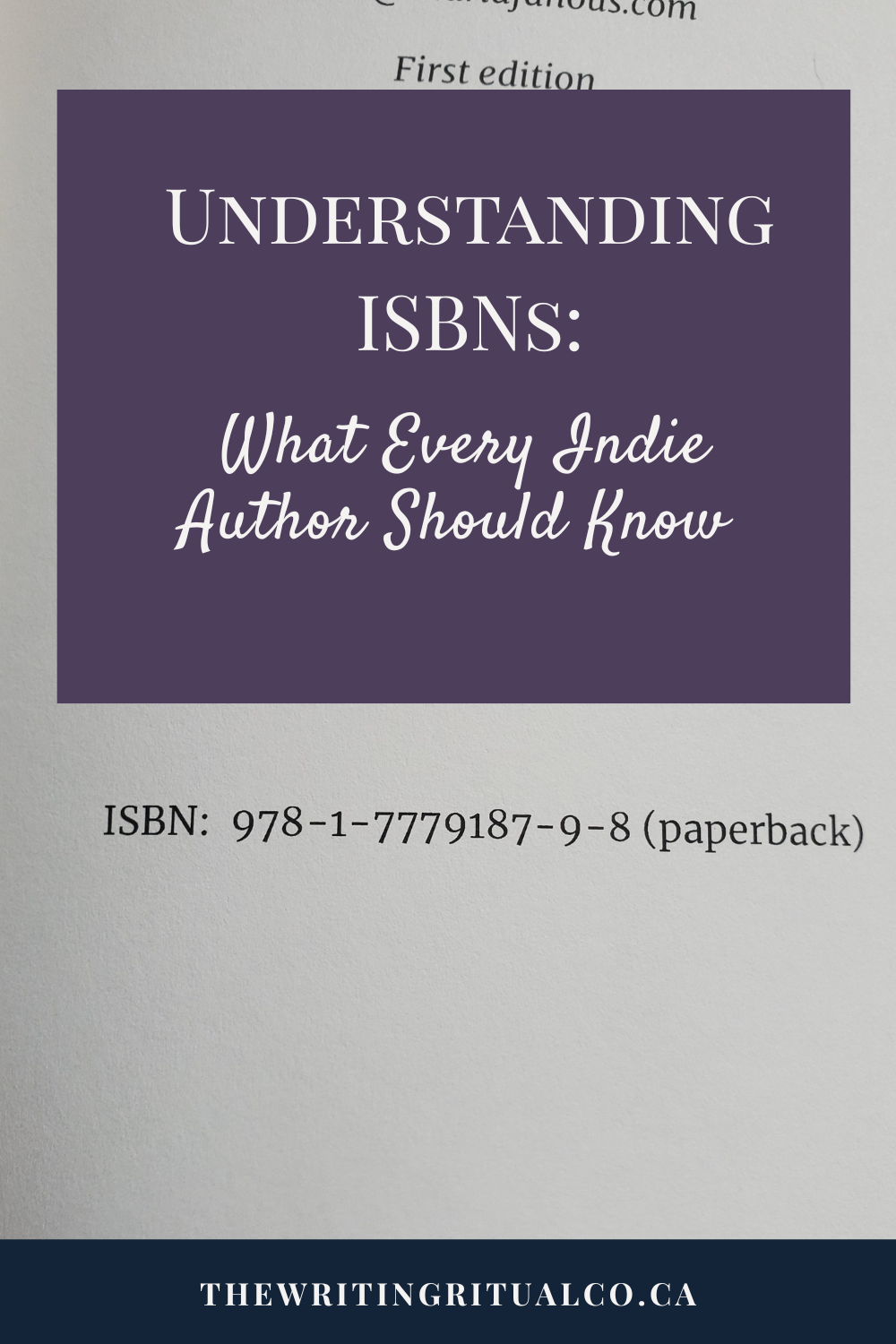Understanding ISBNs: What Every Indie Author Should Know
Congratulations! You’ve decided to publish your book. That’s no small thing. You’ve poured your heart into your words, and now you’re ready to send them out into the world. Before you do, there’s one practical (but important) step you’ll need to take care of: securing an ISBN.
It may sound like one of those technical details best left to the professionals, but understanding how ISBNs work, and how to get one, gives you something invaluable: ownership and control of your creative work. So, let’s walk through what an ISBN is, why you might need more than one, and how to obtain one, specifically if you’re publishing in the United States or Canada.
What Is an ISBN (and Why Do You Need One)?
An ISBN, or International Standard Book Number, is a 13-digit identifier that acts as your book’s digital fingerprint. It tells the publishing world exactly which version of a book you’re holding, who published it, in what format, and through which distribution channel.
Think of it as your book’s passport. Without it, your book can’t be officially recognized in bookstores, libraries, or most online retailers. Every edition, paperback, hardcover, eBook, audiobook, or large-print version requires its own unique ISBN.
That means even if the words are the same, a different format or distribution platform (like Amazon KDP vs. IngramSpark) may need a separate ISBN. This small but mighty number keeps your publishing life organized and ensures your book is easy to find, sell, and track across the world.
Getting an ISBN in Canada
If you live in Canada, you’re in luck. ISBNs are free for Canadian publishers through Library and Archives Canada (LAC).
Step 1: Register with ISBN Canada
Go to ISBN Canada and create an account. You’ll fill out basic details like your publisher name (which can be your personal name or imprint), address, and contact information. Once approved, you’ll receive your ISBN account, where you can request ISBNs anytime.
If you publish primarily in French, ISBNs are issued through Bibliothèque et Archives nationales du Québec (BAnQ). The process is nearly identical and just as straightforward.
Step 2: Request and Assign Your ISBNs
After registration, you can request ISBNs for your projects and assign them to each format (paperback, eBook, hardcover, etc.). LAC keeps a record of your metadata so your book can be easily found by libraries, bookstores, and distributors.
Step 3: Legal Deposit Requirement
When your book is published, you’re required to send copies to Library and Archives Canada for legal deposit, typically one or two copies, depending on the format. This ensures your work becomes part of Canada’s national collection, preserving it for future generations.
Think of it as an act of legacy, your story, quite literally, becoming part of the nation’s library.
Getting an ISBN in the United States
If you’re publishing in the U.S., your ISBNs are obtained through Bowker, the official ISBN agency. Their website, MyIdentifiers.com, is where authors and publishers go to buy, assign, and manage ISBNs.
Step 1: Create an Account
Start by creating a free account at MyIdentifiers.com. You’ll enter your name, address, and (if you have one) your publishing imprint name (read more of the importance of having an imprint here). This information will appear in the global database as the publisher of record, which is an important distinction. It ensures your name or imprint, not Amazon or another platform, is listed as the official publisher.
Step 2: Purchase Your ISBNs
Bowker sells ISBNs individually or in bulk. Current pricing (as of 2025) is approximately:
1 ISBN – $125 USD
10 ISBNs – $295 USD
100 ISBNs – $575 USD
If this is your first book, buying a single ISBN may feel right. But if you plan to release multiple formats or future titles, a 10-pack often makes more sense financially and practically.
Step 3: Assign Your ISBN
Once you’ve purchased your ISBNs, you’ll assign them to specific book formats and add metadata: title, subtitle, author, publication date, and format (paperback, eBook, etc.). This information is added to Bowker’s database, making your book discoverable across the industry.
Step 4: Barcodes
For print editions, you’ll need a barcode for your back cover. Bowker can generate one for you (for an additional small fee), or your print-on-demand service may create it automatically. Either way, your barcode is what stores scan when your book is sold.
Step 5: Protect Your Publishing Identity
Some self-publishing platforms, like Amazon KDP, offer “free ISBNs.” While this can be convenient, it means Amazon will be listed as the publisher, not you. If you want full creative and professional control, buy your ISBN directly from Bowker. It’s an investment in your author imprint and your future catalogue of work.
Getting an ISBN might not feel as creative as writing your book or designing your cover, but it’s one of the most empowering steps in the publishing process. It’s about ownership, ensuring your book is registered under your name, your imprint, and your vision.
When you understand how ISBNs work, you take your place not just as a writer, but as a publisher, the agent of your own creative legacy.
Keep sharing your story,
Sharla



